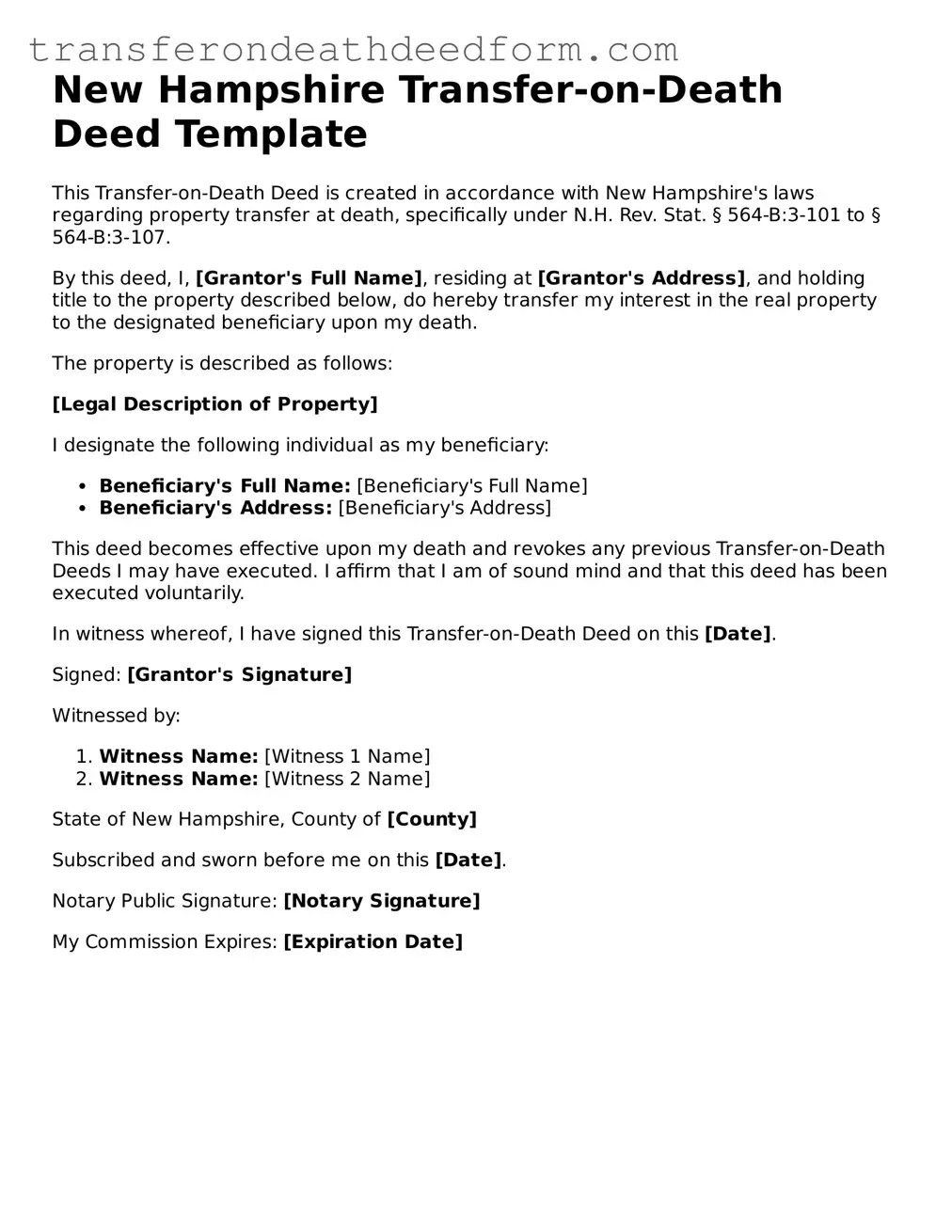New Hampshire Transfer-on-Death Deed Template
This Transfer-on-Death Deed is created in accordance with New Hampshire's laws regarding property transfer at death, specifically under N.H. Rev. Stat. § 564-B:3-101 to § 564-B:3-107.
By this deed, I, [Grantor's Full Name], residing at [Grantor's Address], and holding title to the property described below, do hereby transfer my interest in the real property to the designated beneficiary upon my death.
The property is described as follows:
[Legal Description of Property]
I designate the following individual as my beneficiary:
- Beneficiary's Full Name: [Beneficiary's Full Name]
- Beneficiary's Address: [Beneficiary's Address]
This deed becomes effective upon my death and revokes any previous Transfer-on-Death Deeds I may have executed. I affirm that I am of sound mind and that this deed has been executed voluntarily.
In witness whereof, I have signed this Transfer-on-Death Deed on this [Date].
Signed: [Grantor's Signature]
Witnessed by:
- Witness Name: [Witness 1 Name]
- Witness Name: [Witness 2 Name]
State of New Hampshire, County of [County]
Subscribed and sworn before me on this [Date].
Notary Public Signature: [Notary Signature]
My Commission Expires: [Expiration Date]
